How To Take Backup Of Installed Software In Windows 7
If you ain a Windows PC, y'all'll probable have a list of go-to software that you use all the time, whether it's Chrome, Outlook, or Steam. Exterior of these favorites, there'll be other programs you've forgotten most or have never even used. That tin can be problematic—forgotten software takes upwardly disk infinite and tin be a security risk.
We absolutely recommend you properly uninstall programs on Windows that yous don't use, but that doesn't assistance y'all if you don't know what software you have installed, especially if you're managing multiple PCs at one time. Here are several ways to generate a list of installed programs in Windows x.

Using The Windows PowerShell (Get-RemoteProgram)
If y'all want a listing of installed programs in Windows 10 that you can export, the best solution is to use a built-in tool to create it. Few tools be to do this, but 1 choice is to utilise the Windows PowerShell (or control prompt, if you're feeling old schoolhouse).
For those who don't know, the PowerShell has largely replaced the command prompt equally the default terminal on Windows PCs. A script exists for PowerShell users to automatically listing all installed programs called Become-RemoteProgram. This queries the Windows registry for a full and complete listing of installed software on your PC.
- You'll demand to download the Become-RemoteProgram script for the PowerShell from the Microsoft TechNet website first. Download this, so place the file in your C:\Windows\System32 folder.
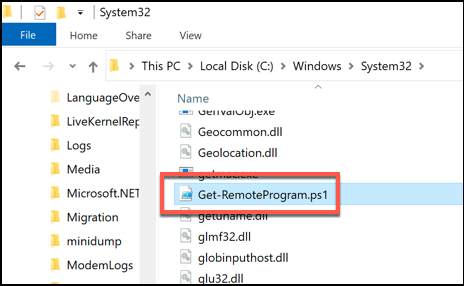
- Next, you'll need to open a PowerShell window. You can exercise that by right-clicking the Windows Offset menu and pressing Windows PowerShell (Admin) to open a new PowerShell window.

- You'll need to make sure that Windows can run scripts similar this—type Prepare-ExecutionPolicy Unrestricted to ensure that you can, striking enter, then press A to confirm.
- If that is successful, blazon Go-RemoteProgram to run the script, and then hit enter. If y'all want to consign the list to a file, type Get-RemoteProgram > listing.txt instead.
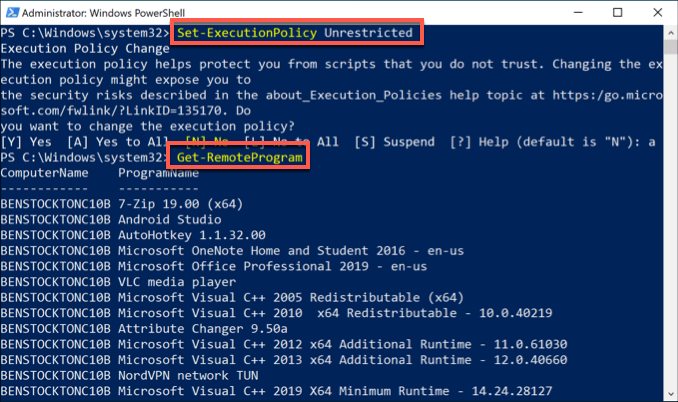
Using The Windows PowerShell (WMIC)
Y'all can use either the PowerShell or cmd to run the Windows Management Instrumentation Control-Line Utility (WMIC) to generate a listing of installed programs in Windows 10. As the PowerShell is the default command-line tool for Windows x users, we'll be using that here.
Using the WMIC tool to view or export a list of your installed Windows software will create a similar list to the Become-RemoteProgram script.
- In an open PowerShell window or command line terminal with authoritative privileges, type wmic. Once the WMIC prompt opens, type /output:C:\list.txt production go name, version and then hit enter. Y'all can supplant C:\list.txt with another file proper name or output directory.

- Type exit to close the WMIC tool one time you're done. A list of your installed software should exist available in the text file at the location you provided for the output file.
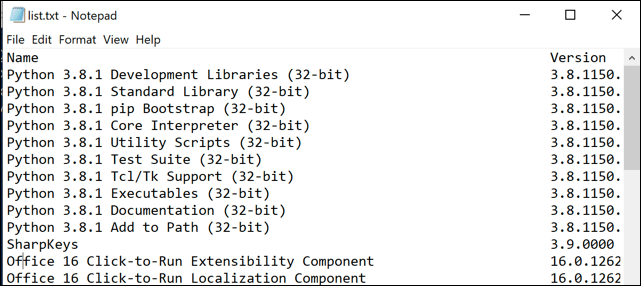
Using Impress Screen (Apps & Features)
If y'all want a visual list of your installed software, you could use the impress screen fundamental to take a screenshot in Windows of the Apps & Features menu in Windows Settings, where Windows displays a listing of your installed software for you to modify or remove.
- To access this bill of fare, correct-click the Windows Get-go carte and press Settings. From here, press Apps > Apps & features. A list of your installed software will exist visible in a scrollable list.
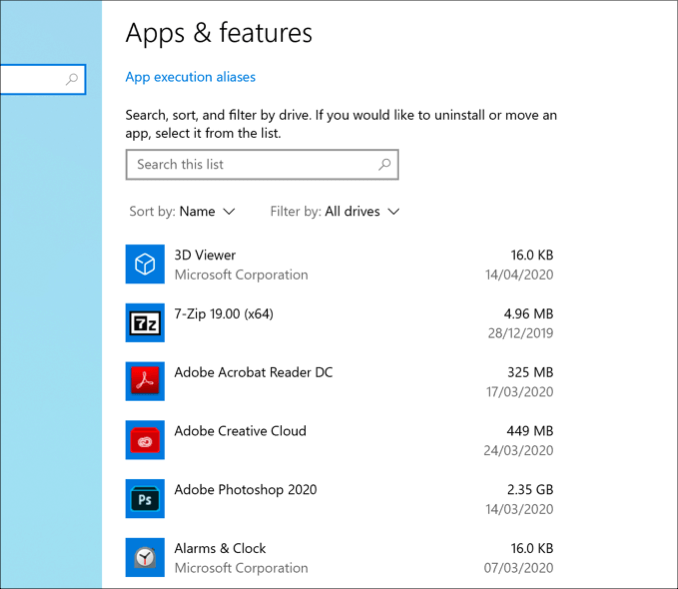
It's unlikely that your installed PC software will fit in just ane screenshot. You'll need to press the PrtScrn push on your keyboard (or utilise third-party screenshot tools like Snagit), so paste your screenshots into a third-party image editor to save (or into a Give-and-take certificate).
You'll need to coil through the list and repeat this step to brand sure you lot relieve the full and complete list of installed software on your PC.
Using NirSoft UninstallView
NirSoft UninstallView is a quick, tertiary-party alternative that can help you generate a list of installed programs in Windows x. Like the Get-RemoteProgram script, it volition query the Windows registry for a complete listing of installed software.
- To start, download NirSoft UninstallView and extract the ZIP file (the 64-scrap version is recommended). Once that's done, run the extracted UninstallView.exe file.
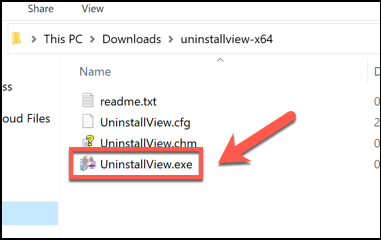
- UninstallView will scan your PC for installed software. One time that process has completed, the full listing of software will exist available in the UninstallView window. To export the list, press View > HTML Report – All Items.
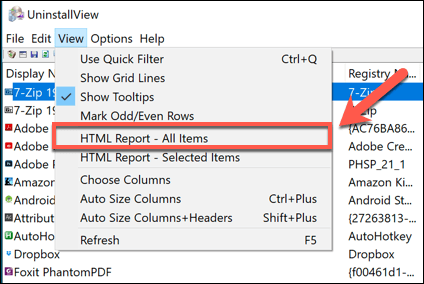
- A file chosen written report.html will exist created in the same binder as the UninstallView.exe file, showing a formatted list of your installed software. Pressing HTML Report – All Items volition open this file in your default web browser.
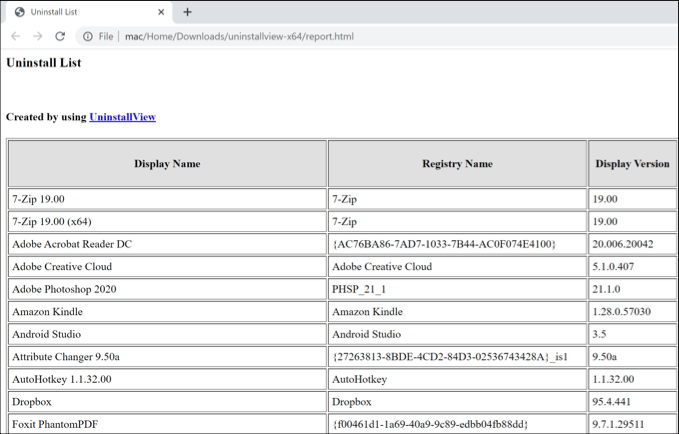
Using Belarc Advisor
Belarc Counselor has been a must-have tool in the armory of local PC repair shops for years, and it remains a useful tool for Windows 10 users. Information technology generates a breakdown of your PC software, hardware, settings, installed updates, and more to allow you to fully inspect your Windows installation.
Like UninstallView, this volition be visible in a formatted HTML file that you can export elsewhere.
- To start, download Belarc Advisor and install it. Once information technology's installed, Belarc Advisor volition begin an immediate audit of your PC—this will accept a few moments to complete.

- Your default web browser will open one time Belarc has finished its inspect of your PC. To view a listing of your installed software, printing the Software Versions and Usage link in the side menu, or gyre to that section manually. This file will be available in the C:\Plan Files (x86)\Belarc\BelarcAdvisor\Organisation\tmp binder, should you lot wish to export information technology.
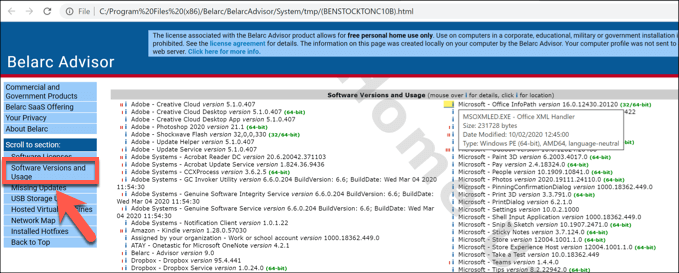
Using Geek Uninstaller
Geek Uninstaller is a tertiary-party tool for uninstalling software. Like UninstallView, yet, it as well allows you to view and export a list of your installed programs in Windows 10.
- Download Geek Uninstaller to begin—you tin choose the free version or the paid, Pro version. It comes equally a Nothing file, then unzip the contents, and then run the geek.exe file to launch the tool.
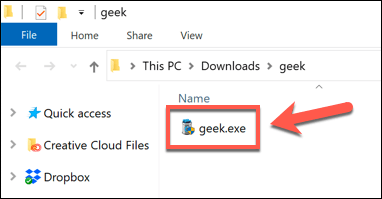
- The Geek Uninstaller window will show your installed software in an alphabetical list. To consign the list, press File > Export to HTML or printing Ctrl + Due south on your keyboard.
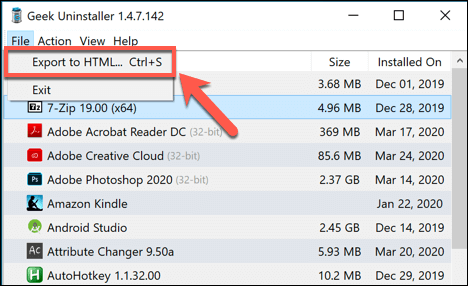
- Geek Uninstaller volition ask you where to save the file—cull a location and a filename, then printing Save to salve the file.
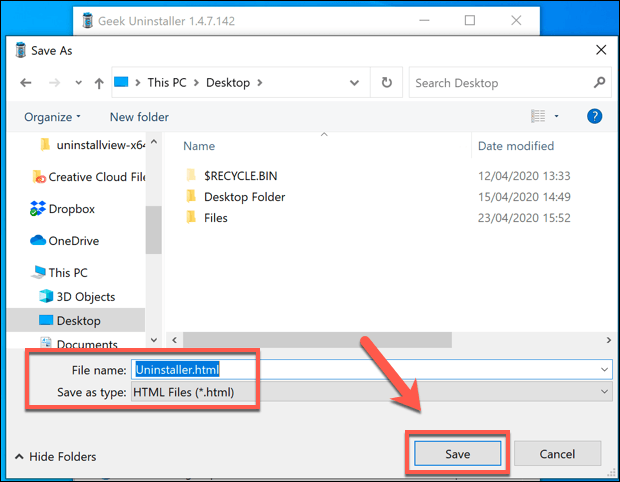
- The generated listing of your installed software volition be saved, with the file automatically opened in your default web browser for you lot to view.
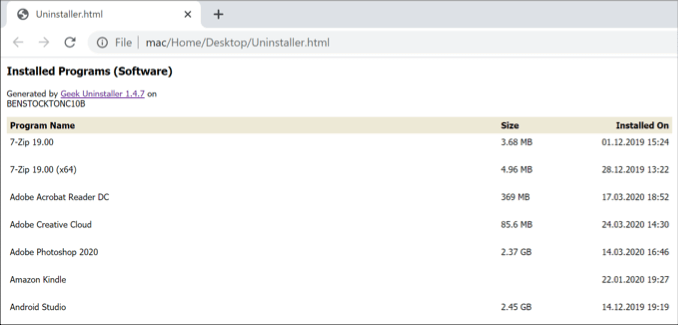
CCleaner (Last Resort Option)
At that place are plenty of reasons why you shouldn't download CCleaner anymore. Once a go-to and essential piece of maintenance software for Windows users, many of its core features have been rendered useless or ineffective due to Windows changes, or have been incorporated into Windows itself (or into other, meliorate third-party apps).
CCleaner likewise suffered a rather unfortunate incident dorsum in 2017, when a malware-injected version of the CCleaner installer was uploaded and installed past millions of users. For about users, the trust is gone and the message is clear—avoid CCleaner.
However, CCleaner can consign a list of installed programs, but we're not going to recommend downloading it to do then. This is a concluding resort option, just if you already have CCleaner installed, you could use it to generate and export a list of your installed programs. That is, of form, before you rush to remove information technology.
- To exercise that, open CCleaner and printing the Tools tab on the left, then click Uninstall. At the bottom of the window, press the Save to text file button. This will allow y'all to consign a list of your installed software.
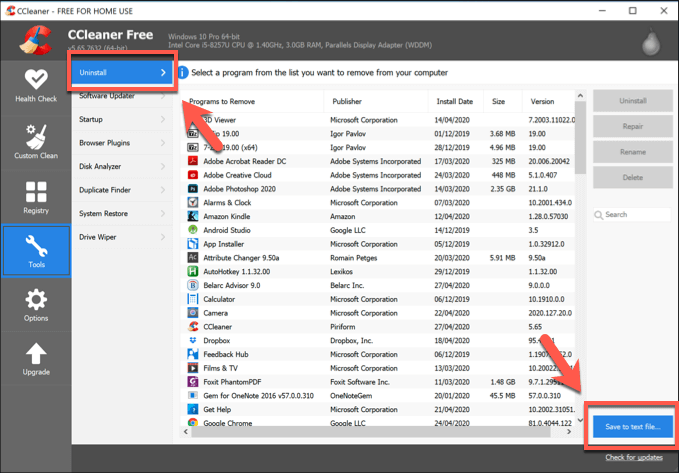
- Cull a location and filename for your exported list, and so printing Save to salve information technology.
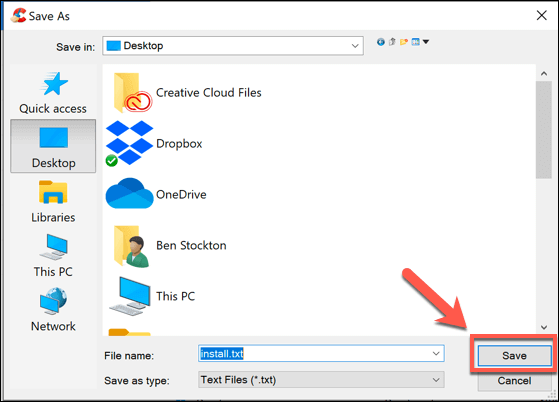
This volition consign your installed files as a file formatted using tab delimiters. Opening the file using Microsoft Excel volition let you to view the list in a more manageable way.
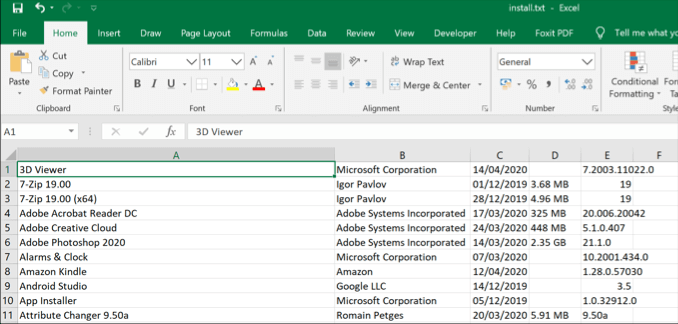
Removing Or Updating Windows Software
If you prefer to stay organized, or if you take likewise many PCs to maintain, generating a list of installed programs in Windows 10 can help you find the software you need to remove or update to give you more deejay space and ameliorate your security.
If you don't need to remove it, brand sure y'all find ways to go along your software updated automatically to become the latest security patches and problems fixes. Yous may end upward with software that you just don't want on your PC, yet. If that'due south the example, be sure to remove unwanted software from your PC as soon every bit yous find it.
Exercise non share my Personal Information.
Source: https://helpdeskgeek.com/how-to/generate-a-list-of-installed-programs-in-windows/
Posted by: romerocolookstal44.blogspot.com

0 Response to "How To Take Backup Of Installed Software In Windows 7"
Post a Comment